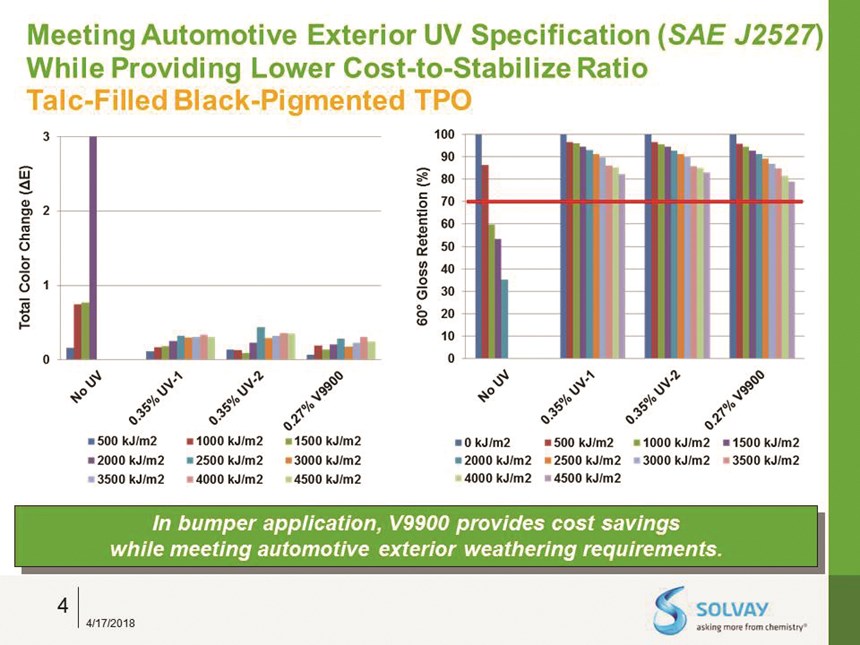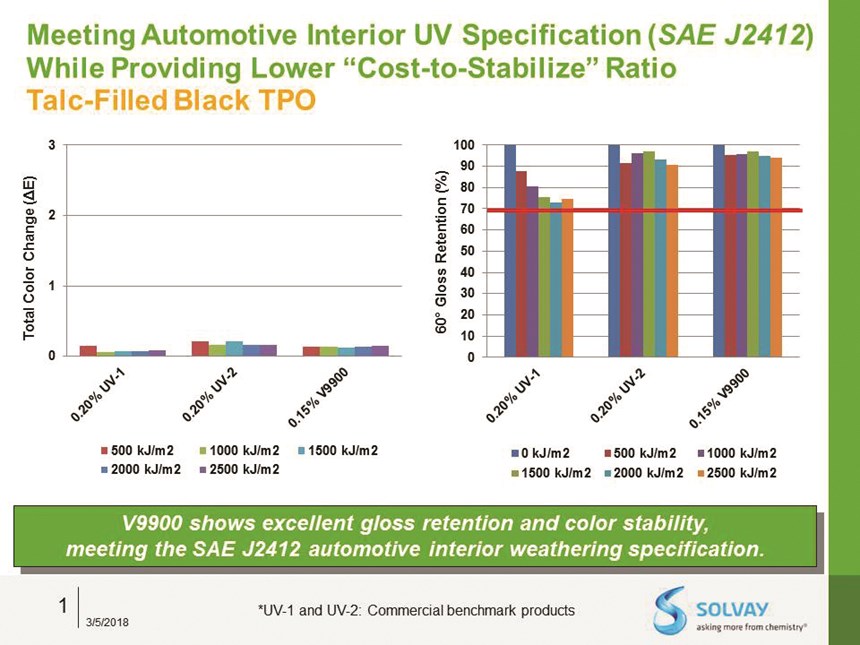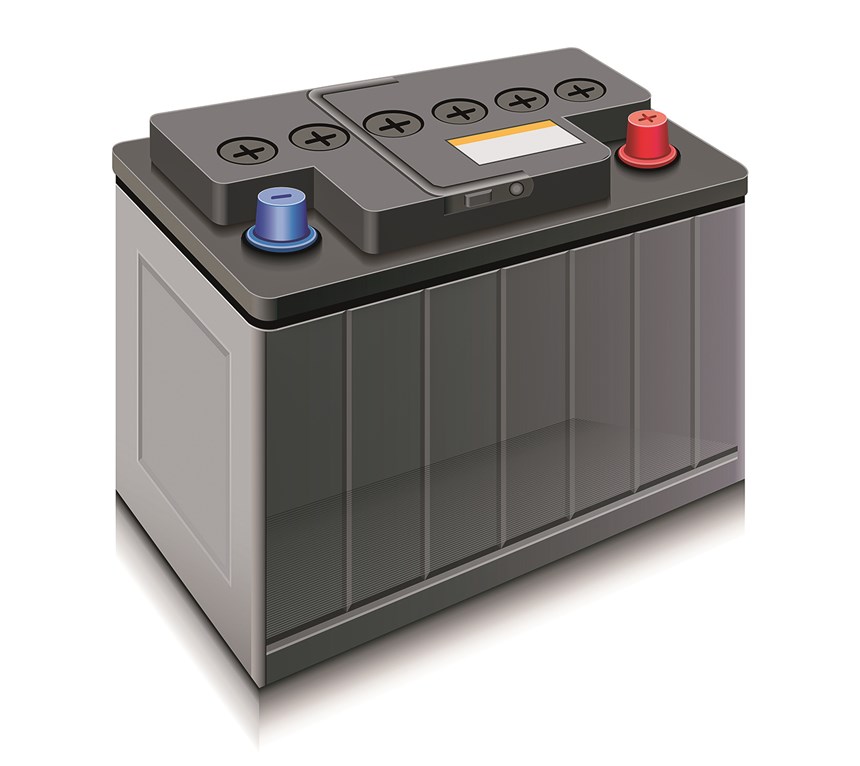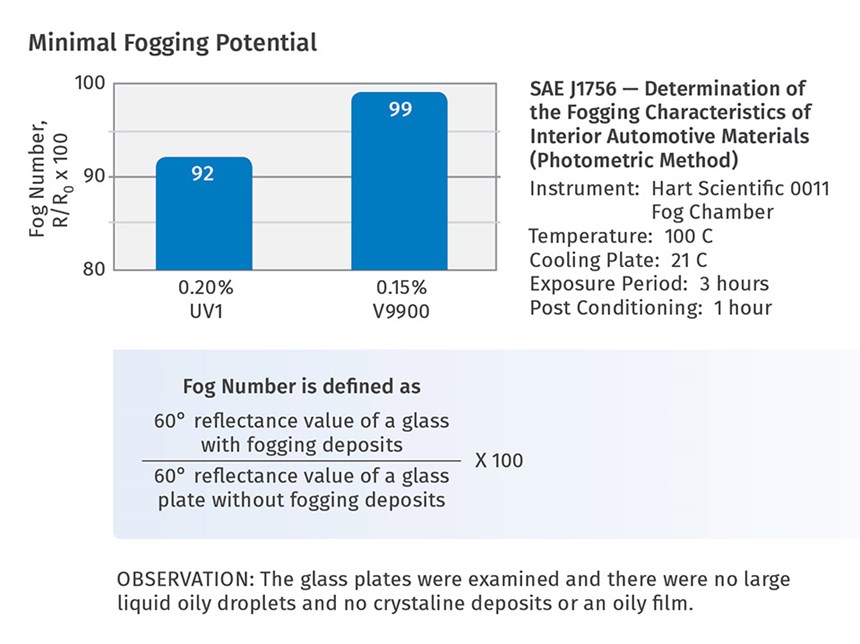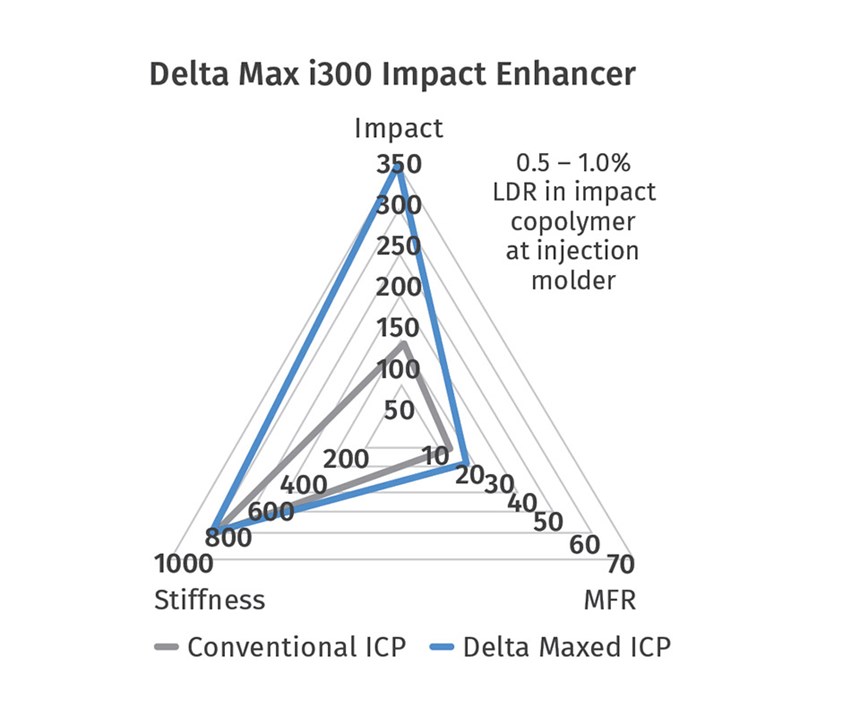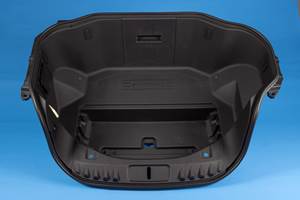Every few years in the world of additives for polyolefins, a few notable products are launched that either challenge or complement well-established industry workhorses. Three such new additives, one from Solvay Technology Solutions, Saddle Brook, N.J., and two from Milliken & Company, Spartanburg, S.C., are aimed primarily at PP interior, exterior and underhood automotive components but also show significant potential for non-automotive applications.
UV STABILIZER FOR TPO & CFRP
Solvay Technology Solutions is a new business unit that was formed following Solvay’s acquisition of Cytec’s Cyasorb Cynergy Solutions, which develops and produces hindered amine light stabilizers (HALS) and various UV absorbers. The Polymer Additives div. of Solvay Technology Solutions has now developed what is said to be a next-generation UV stabilizer—a combination of a monomeric high-molecular-weight (HMW) HALS and a non-traditional UV absorber that reportedly meets all worldwide automotive UV weathering specifications.
New Cyasorb Cyxtra V9900, compared with two other workhorse UV stabilizers, has been shown to confer superior gloss retention and outstanding color stability that meet the toughest high-temperature interior weathering requirements. Moreover, it is said to surpass automotive requirements such as low VOC emission, low fogging, and low odor, and does not interfere with paint adhesion. Says Andrea Landuzzi, global marketing director for additive technologies, “The automotive industry is quickly turning to thermoplastic polyolefins (TPOs) and carbon-fiber reinforced plastics (CFRP) to help them develop lighter, more fuel-efficient automobiles with lower emissions. The U.S. Corporate Average Fuel Economy (CAFE) standard increases the mileage of new car models from 39 miles to over 50 mpg by 2025, while in Europe OEMs must reduce CO2 emissions for new cars to 95g/km on average from 2020.”
Cyxtra V9900 has been shown to protect the physical properties and aesthetics of automotive TPOs against UV exposure, extreme temperatures and other environmental factors. The company claims thisadvanced stabilizer d elivers an optimal balance of processing and cost efficiencies with a high degree of performance durability.
It can enhance TPO performance in a broad range of automotive applications, including bumpers, door panels, seatback covers, pillar moldings, door trims, instrument panels, head and side impact areas, fender liners and flares, taillight housings, and cowl vents. It has also been shown to protect surfaces of CFRP in aerospace and automotive components used in the BMW i3, as well as surfaces of 40% long-glass PP exterior parts.
In addition to polyolefin automotive stabilization, Cyxtra V9900 shows significant potential for use in multilayer agricultural films requiring increased weatherability and pesticide resistance. By the end of the year, the company will have results of agricultural film trials.
MODIFIERS FOR PP IMPACT COPOLYMER
Milliken has a developed what is characterized as an unusual family of modifiers that represent a radical advancement in additive technology for PP impact copolymers (ICPs) as well as recycled PP. The patent-pending DeltaMax family, described as novel reactive extrusion modifiers, reportedly maximize PP impact strength and MFR without compromising stiffness. These improved properties allow PP to be used in a wider range of applications in more cost-effective ways. This is a new additives platform addition to Milliken’s line of clarifiers and nucleating agents.
According to Prem Patel, global business-development manager for plastics additives, Milliken is already working on a new generation of DeltaMax additives with a focus on functionality and value.
DeltaMax technology reportedly is also highly effective in modifying post-consumer and post-industrial recycled resins. It elevates impact and melt flow to the same level as—or better than—those of virgin resin, a capability that allows compounders and converters to incorporate up to 100% recycled PP without sacrificing performance or processing. The DeltaMax line currently comprises three grades:
- a200 All-Purpose Modifier, said to provide a strong balance of impact, stiffness and MFR to maximize the physical properties and processability of ICPs.
- i300 Impact Enhancer, said to maximize impact strength while optimizing MFR for improved physical properties and processability of ICPs.
- m100 Melt Flow Modifier, said to increase MFR while providing equal or better impact performance to maximize physical properties and processability of ICPs.
Says Patel, “DeltaMax modifiers address a long-standing unmet need in the PP industry for higher impact at higher MFR. “DeltaMax simultaneously improves both impact and melt flow in PP impact copolymers and recycled resins, which now enables converters to make parts stronger, lighter and faster than before. It also improves the sustainability profile of the industry and provides a range of other processing, energy-reduction and system-cost benefits. The net effect is that converters, brand owners and OEMs can now meet market needs for higher impact driven by e-commerce shipments and increasing automotive safety standards, while keeping a keen eye on improving sustainability and costs.”
Primarily targeted to processors using neat or recycled PP, the three DeltaMax modifiers are generally recommended for use together, with typical masterbatch letdown ratios of 0.5-1%.
“Our goals was to improve PP overall, so we are actually competing with specialty, higher-performance, higher-MFR, high-impact PP resins or competing with PP compounds that are impact modified,” explains Patel. In the latter case, 5-20% letdown ratio of impact modifier is typically used, which increases impact but decreases stiffness and reduces MFR. In fact, for some soft TPOs, loadings of as much as 40% impact modifier are required, according to Patel.
DeltaMax modifiers reportedly offer processors the ability to increase impact performance, maximize melt flow, or achieve a precise balance of the two. The flow modifier can raise melt flow by as much as five times while maintaining impact and stiffness.
This improvement allows processors to increase operating efficiencies and create more innovative part design with easier flow through molds. The impact modifier increases impact strength by as much as three times by optimizing rubber dispersion and domain size. This higher impact performance allows compounders to decrease rubber content to reduce weight and costs.
Automotive applications include bumpers and exterior panels, instrument panels, door panels and other interior components where low flow length is ideal, and underhood components such as battery housings. As part of its product-development process, the company has tested DeltaMax with pilot customers. In bumpers and exterior panels, which typically require average loadings of 10-20% impact modifier, addition of DeltaMax at 0.5-1% can reduce those loadings by half, says Patel. As for battery cases, injection molders want to work with a PP impact copolymer that has over 20 MFR vs. a typical 6-10 MFR.
Non-automotive target applications for DeltaMax include PP copolymers and compounds for housewares such as totes and hampers; lawn-and-garden products such as outdoor furniture and flowerpots; and industrial crates, battery cases and pails. These PP materials can also be used in appliance components such as washer drums, refrigerator trays and motor housings.
PP NUCLEATOR BALANCES STIFFNESS, IMPACT
HPN-715, the latest addition to Milliken’s family of Hyperform nucleating agents, is engineered for injection molded PP and boasts stiffness increases of up to 10% versus competitive materials while maintaining desirable impact performance.
Optimized stiffness/impact balance enables thinner-wall designs and reduces the need for fillers, promoting light weighting, design flexibility and cost reduction. Moreover, this new nucleating technology reportedly provides higher HDTs than with other advanced nucleators, allowing PP to be used in vehicle under-hood components, where it can potentially replace engineering resins like styrenics or nylons; and in opaque microwaveable containers and washing-machine and dishwasher components.
According to Bhavesh Gandhi, global product-line manager, this powdered agent is targeted to compounders and resin suppliers at typical use levels of 1000 ppm. Ghandi says this agent is a novel organic salt designed for maximum improvement in physical and thermal properties of PP. He also confirms that Milliken has filed patents on the technology and that the product has been tested for both automotive and appliance applications. “HPN-715 provides opportunities to upgrade PP to compete against engineering plastics, including styrenics. In terms of nucleation technologies, HPN-715 provides superior performance over conventional as well as advanced nucleating agents.”
Hyperform HPN-715 nucleating technology has raised the bar for stiffness and thermal stability of PP, says Ghandi, noting that it was developed in response to industry demands for PP with maximum stiffness to address new environmental, cost and performance challenges.
HPN-715 surpasses competitive additives in several ways. First, it delivers the highest stiffness available for PP ICPs, homopolymers and high-crystalline materials. This is up to 10% higher than PP with other nucleators, and up to 30% higher than non-nucleated PP.
Second, due to its effectiveness at very low loadings, the new product avoids negative effects on impact performance. Traditional nucleating agents require users to sacrifice impact to gain greater stiffness.
The HPN-715 technology is also said to excel in thermal stability by improving the HDT of PP. Compared with other nucleators, HPN-715 enables PP to achieve HDTs that are 5-7° C (9-12.6° F) higher. Compared with non-nucleated PP, the HDT improvements are even more dramatic: 25-30° C (45-54°F) higher. With this increase in HDT, parts made with HPN-715 nucleated resins can withstand strenuous thermal conditions, especially in automotive and appliance parts and microwavable food packaging. In automotive underhood parts, the higher stiffness delivered by this nucleating agent can reduce loadings of glass fiber and talc to lower weight and improve flow and surface finish. Application examples include automotive air-filter casings, battery cases and containers for windshield washer fluid.
Moreover, the higher HDT allows opaque PP containers made with HPN-715 agent to better withstand microwaving. Small appliances that generate high temperatures, such as coffee makers and electric kettles, can use high-crystalline PP enhanced with HPN-715 instead of more expensive engineering thermoplastics to achieve higher wattages or incorporate thinner-wall parts.
Related Content
Carbon Fiber Reinforced Nylon 12 for Injection Molding
CRP Technology’s new composite is 100% recycled from Windform XT 2.0 IMG industrial 3D printing material.
Read MoreAdditive Fusion Technology Optimizes Composite Structures for Demanding Applications
9T Labs continues to enhance the efficiency of its technology, which produces composite parts with intentionally oriented fibers.
Read MoreIndustrial Resin Recycling Diversifies by Looking Beyond Automotive
Recycler equips for new business in medical, housewares and carpeting.
Read MoreAutomotive Awards Highlight ‘Firsts,’ Emerging Technologies
Annual SPE event recognizes sustainability as a major theme.
Read MoreRead Next
See Recyclers Close the Loop on Trade Show Production Scrap at NPE2024
A collaboration between show organizer PLASTICS, recycler CPR and size reduction experts WEIMA and Conair recovered and recycled all production scrap at NPE2024.
Read MoreFor PLASTICS' CEO Seaholm, NPE to Shine Light on Sustainability Successes
With advocacy, communication and sustainability as three main pillars, Seaholm leads a trade association to NPE that ‘is more active today than we have ever been.’
Read MorePeople 4.0 – How to Get Buy-In from Your Staff for Industry 4.0 Systems
Implementing a production monitoring system as the foundation of a ‘smart factory’ is about integrating people with new technology as much as it is about integrating machines and computers. Here are tips from a company that has gone through the process.
Read More



